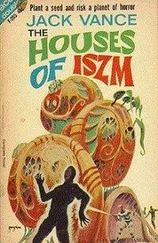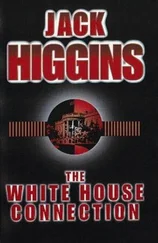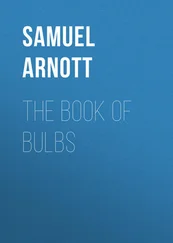Yet Hess had allowed himself to be beguiled by it. Inconstant, deceptive, a reflected light illuminating a hidden imagination. A journey into the unknown, a dream or a nightmare. The astrologers had delivered an auspicious reading for the night of his flight. The horoscope had indicated six planets in the constellation of Taurus, enough bias to cause the earth to tilt. But it was the conjuction of a full moon that had spurred him on.
In Spandau he followed the Apollo landings. He obtained minute-by-minute timetables from NASA giving details of space activity. That they might get to the moon first: this was his adamant wish as he followed the flight of Armstrong, Aldrin and Collins. With, of course, the legacy that Germany had bequeathed them. Then they might defeat the Russians in space, as the Reich had failed to defeat them on land.
On the eve of the launch Wernher von Braun eulogised his adopted nation at a press conference. ‘Tonight I want to offer my gratitude to you and all Americans who have created the most fantastically progressive nation yet conceived and developed,’ declared the former SS Sturmbannführer and chief architect of the Saturn V rocket that would propel the Apollo spacecraft into orbit.
Hess listened to the launch on the radio in his cell:
Guidance system goes internal at seventeen seconds leading up to the ignition sequence at 8.9 seconds. We’re approaching the sixty-second mark on the Apollo 11 mission. T-60 seconds and counting. We have passed T-60. Fifty-five seconds and counting. Neil Armstrong has just reported back: ‘It’s been a real smooth countdown.’ We have passed the fifty-second mark. Forty seconds away from the Apollo 11 lift-off. All the second-stage tanks are now pressurised. Thirty-five seconds and counting. We are still GO with Apollo 11. Thirty seconds and counting.
On 10 May 1941, he had his own countdown. Alfred Rosenberg, head of the party Foreign Affairs Department, had arrived at noon. Hess had given him lunch, his mind distracted with thoughts of instruments, jettison fuel tanks, auxiliary oil pumps, radio-direction finders, Scottish mountain altitudes. A light meal of cold meats and salad had been laid out in the dining room. They ate alone — Hess had given instructions to the household staff that they were not to be disturbed, and his wife Ilse was in bed with a cold.
Hess did not speak of his secret mission but merely listened while Rosenberg told him of his own preparations for the planned offensive against Russia. ‘The solution of the Jewish question will presently enter its decisive phase,’ Rosenberg assured him. Himmler was busy preparing his Einsatzgruppen who would follow in the wake of the offensive to eradicate communism and its carriers. Special instructions had already been issued concerning the army’s operational area that ‘commissioned the Reichsführer-SS with special tasks resulting from the final settlement of the struggle between the two opposed political systems’. Directive 21, the order to invade the Soviet Union, had been given the code name Barbarossa.
This made his own operation all the more crucial. He had seen Professor Haushofer only days before and they had talked once more of the geopolitical situation, and his former mentor’s theories on the subject. Peace in the West was essential so that all the Reich’s resources could be concentrated against Russia. Finally the source of Jewish Bolshevism could be burnt out and purified. This was the very presage of their Weltanschauung .
In his final conversation with the professor they had talked of the struggle for survival. A war on two fronts must be avoided at all costs. The continuing war in the West was suicidal for the white race. He did not tell the professor of his planned flight. Haushofer had described a dream in which he had seen Hess striding through the tapestried walls of an English castle, bringing peace to the two great Nordic nations. Did he suspect something?
Rosenberg left at one o’clock and Hess went to take tea with his wife. She had been reading The Pilot’s Book of Everest , an account of the first flight over the Himalayas by the Duke of Hamilton. Albrecht Haushofer, the professor’s son, had been a close friend of Hamilton before the war. Albrecht was a passionate advocate of peace between Britain and Germany and had tried to contact the duke via a dead-letter drop in Lisbon.
Hess and the Haushofers had been exploring all possible channels for negotiation with the British. Peace feelers reached out all over neutral Europe: Switzerland, Portugal, Spain. There was talk of arrangements for a secret meeting between Hess and the British ambassador to Spain on an abandoned tennis court outside Madrid. There were intelligence reports of a powerful underground in England, virulently opposed to Churchill and ready to make terms. And all this time his astrologers had marked out the auguries for his own personal intervention. For now all boded well in his stars, but this could not last. At times his mood rose in exultation, then descended to deep melancholy. He was impatient, overcome with a growing sense of romantic destiny.
As he set down the teacup on his wife’s bedside table he had picked up the book and opened it. In the front there was a full-plate photograph of the duke.
‘He’s very good-looking,’ he said.
She had frowned, unsure as she so often was of her husband’s true sentiments and unaware that Hamilton had become the key to his quest. Hess had an intuitive understanding of the man: an aviator, just as he was. Hamilton had been selected as chief pilot for the Mount Everest expedition on account of his flying skills and his exceptional physical fitness.
‘He is very brave,’ he added, as if to reassure her. ‘Had his mission failed there would have been no hope of rescue.’
Hamilton had flown over the world’s highest mountain in 1933 when such an endeavour was only just technically possible, pushing the limits of the high-altitude flight, into the stratosphere and the edges of space.
The book had astonishing aerial photographs of the Himalayas that reminded Hess of Arnold Fanck’s mountain films with the young Leni Riefenstahl, when she was still just an actress. The stark sunlight on monumental rock and ice; the purity of a cold and frozen landscape.
Yes, flying had given Hamilton a greater understanding. Like Lindbergh, he must have a broad, clear vision of the world. Above all, he would comprehend the symbolism of Hess’s mission. The sporting gesture of it, replete with chivalry and mysticism. The aeroplane a deus ex machina in a flight of peace to bring to an end the war between brother nations.
Albrecht Haushofer had told him of his close personal relationship with Hamilton before the war. Hess had seen the man once, at a banquet in Berlin in 1936 during the Olympic Games. He was indeed handsome, with a strong and noble bearing. Hess had checked and found that a duke was the highest rank in British aristocracy below the monarch. Hamilton was an officer in the RAF, commanding the air defence of an important sector in Scotland. Albrecht had stayed at his country estate, Dungavel House, and had observed that it had its own airstrip.
This would be the chance for Hess to re-establish his authority in the Reich and in the eyes of his leader — his Tribune. In the last few years his star had been eclipsed but his mission would be spectacular. Yes, he would outshine them all.
He said goodbye to his wife. He kissed her hand.
He put on his trench coat and took a valise containing his charts, a wallet of family photographs, Albrecht Haushofer’s calling card and a flat box of homeopathic medicines. He walked out to his waiting Mercedes. They started out towards the Messerschmitt works at Augsburg, but they were ahead of schedule so Hess bade them stop by a wooded glade by the road and in the fading sunlight he walked among the spring flowers.
Читать дальше











